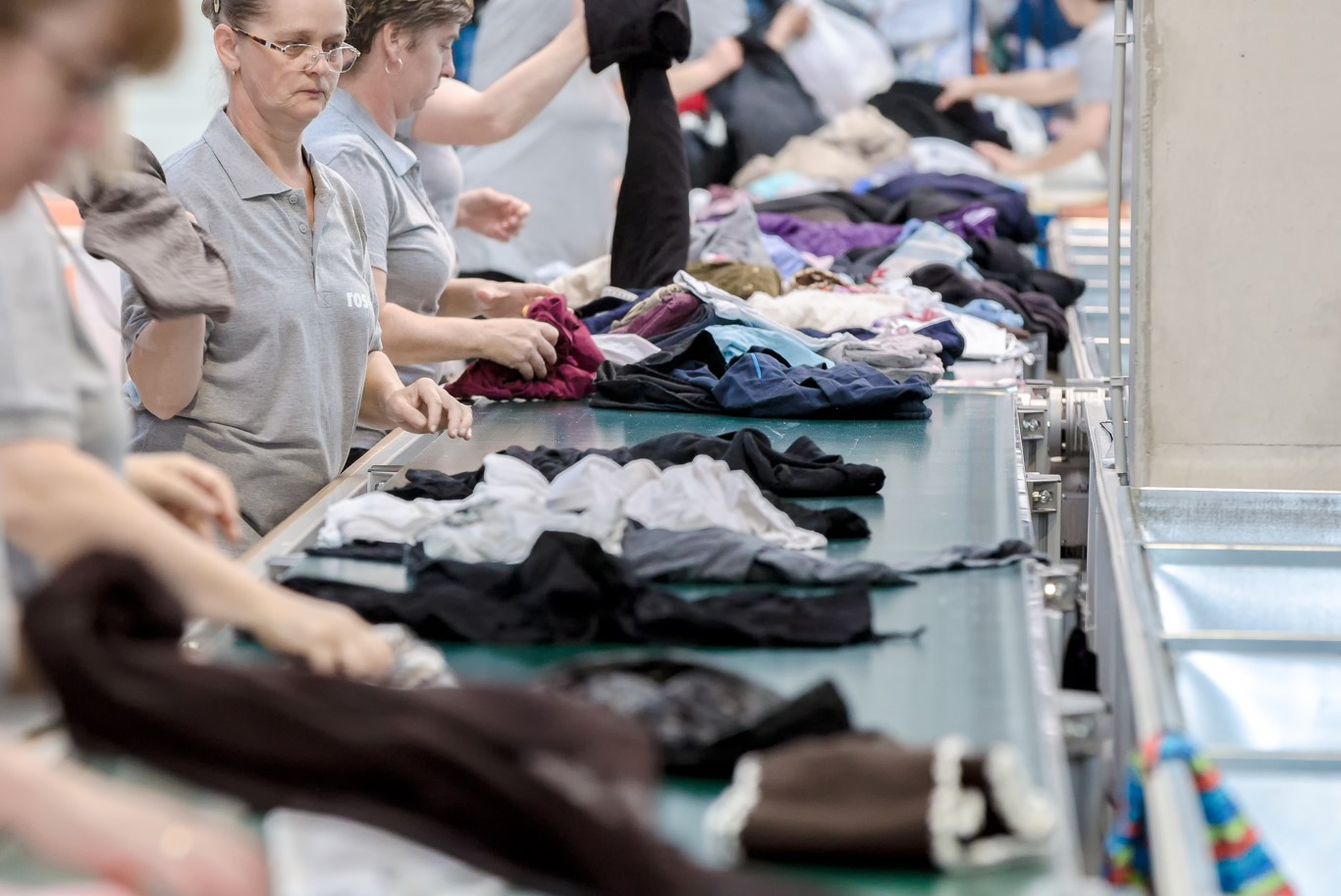Detailed process of preparing for re-use or recycling
The role of sorters is to prepare collected post-consumer textile waste for reuse or, if reuse is not possible, for further recycling. It is a complex process and consists of several steps. The requirements for sorting textile waste for reuse are based on the sorting specifications of the European sorting association EURIC Textiles and the Romanian legislation. Although the sorting process may differ from one operator to another, the following requirements are the mandatory basis to ensure high quality sorting:
1. Storage:
1. Storage:Collected post-consumer textile waste shall be stored in a covered area under dry conditions. Storage time should be minimized as much as possible.
2. Adding to the sorting process
Collected post-consumer textile waste is carefully fed into the sorting process without the risk of destroying reusable pieces.
3. The sorting process
The sorting area must be a dry and clean workplace and must be equipped with everything necessary, such as labeled containers, receptacles, bag and container moving equipment, sorting tables, etc.
4. Preselection
Removal of all foreign materials and impurities from collected post-consumer textile waste
During the sorting process, the higher quality fractions (reusable textiles sorted at individual item level) are completely separated from the lower quality recycling fractions as well as from any foreign materials such as plastics, metals, etc.
The sorter will ensure that cardboard and plastic waste is collected/packed separately and handed over to authorized waste collectors.
5. Fine sorting
Preparation for re-use of defined qualities that have ceased to be waste
The suitability for reuse or recycling shall be checked manually by a qualified professional for each individual piece that is put into the sorting process, according to the waste hierarchy.
In order to cease to be waste and become a product, the fractions/pieces separated as reusable are put through the processes of disinsection, disinfection and cleaning. The sorting company must provide dedicated cleaning facilities and equipment at the sorting location for these three processes.
6. Producing defined qualities for further recycling
The sorting company shall ensure that fractions that are not suitable for reuse will be treated appropriately and professionally in accordance with the waste hierarchy, prioritizing material recycling over inferior options such as energy recovery.
The non-reusable fractions are first sorted according to the requirements of the subsequent recycling process, e.g. fiber composition, garment types such as woven or knitted or color restrictions. The minimum requirement for sorting for recycling is to sort separately the non-reusable fractions with cotton composition and absorbent qualities, suitable for making washcloths.
7. Packaging and labeling
Packaging ensures transportation safety and guarantees the quality of sorted textile products. It must ensure that sorted textiles are packaged and labeled according to their quality and value as required by law.
As textiles prepared for reuse are packaged according to specific needs, bulk materials, which contain other types of products or waste than those labeled on the packaging (e.g. cardboard, plastic bags, other waste, etc.), are not considered to be the result of high quality sorting. Care must be taken to ensure that textiles prepared for reuse are properly packaged and labeled and handled with care.
From an economic and environmental perspective, reuse is more advantageous than recycling or energy recovery because the costs associated with collecting and preparing textiles for reuse are partly covered by the income from reuse, i.e. the environmental impact is significantly lower than new clothes production.

